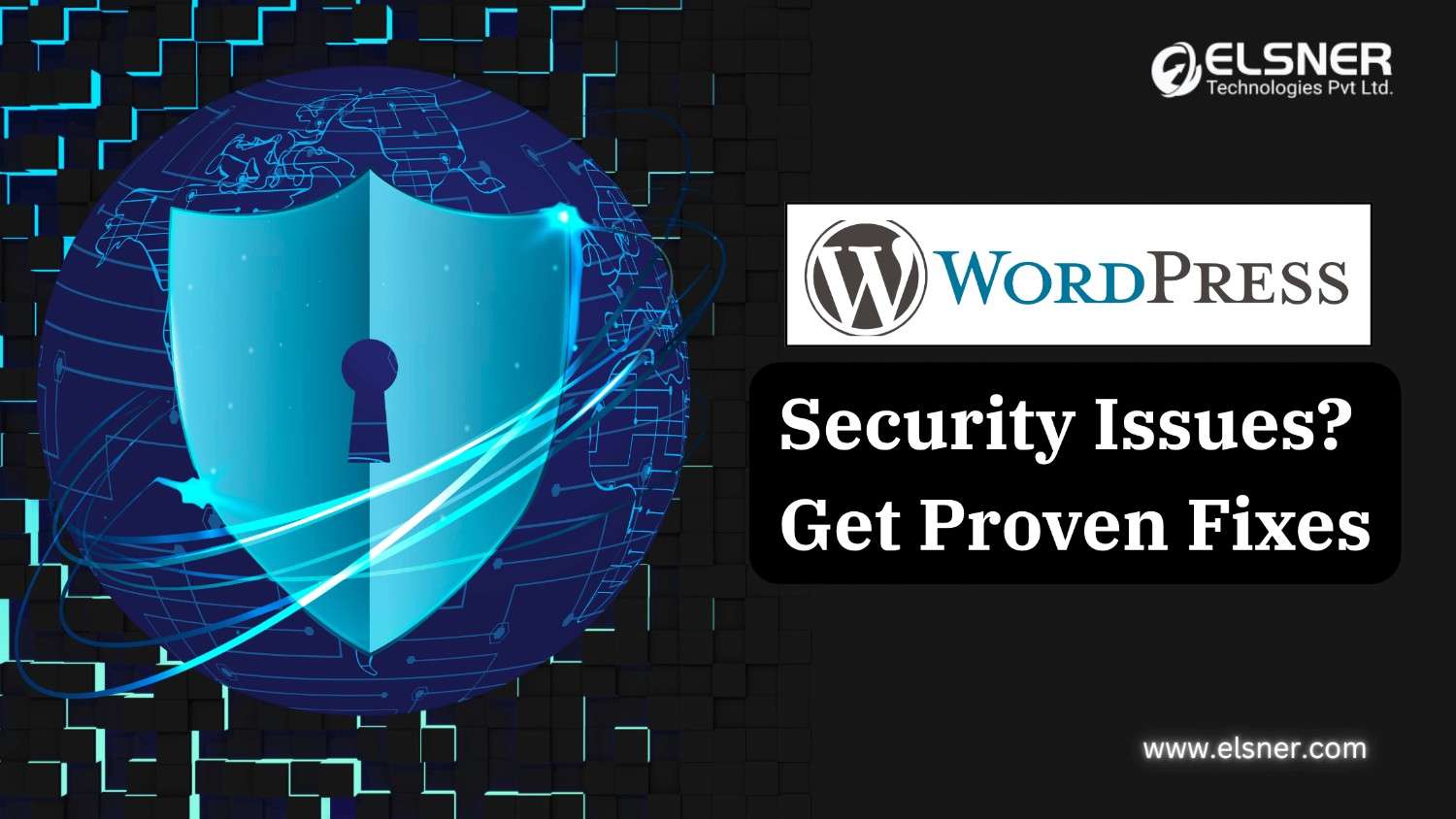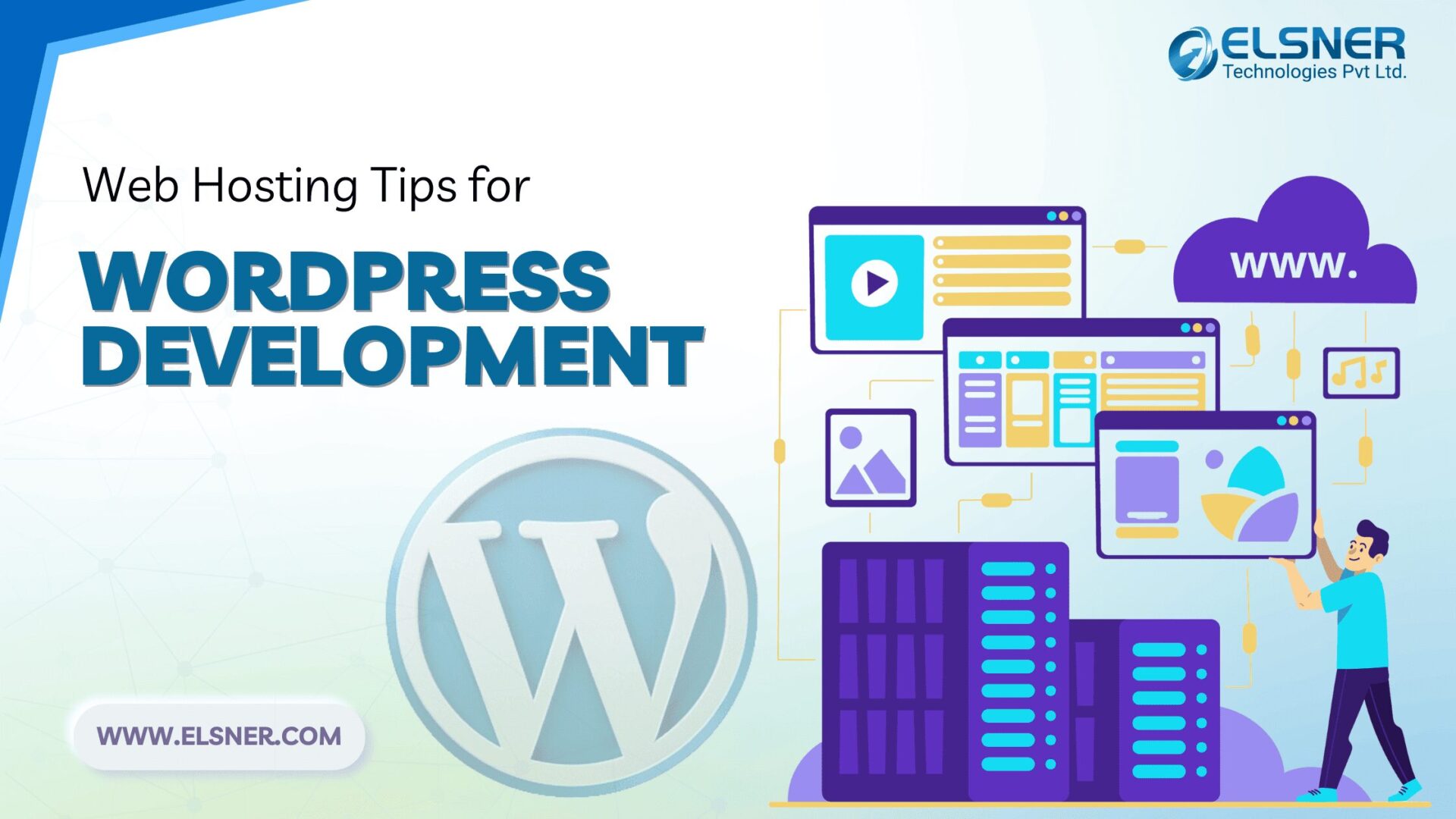- Common WordPress Speed Issues Making Your Website Slow
- Large Images and Unoptimized Media
- Outdated Plugins and Themes
- Poor Hosting and Server Issues
- Excessive Scripts and CSS
- How Slow WordPress Sites Impact Sales and Conversions
- Increased Bounce Rates
- Poor User Experience and Customer Frustration
- SEO Rankings Take a Hit
- Direct Conversion Rate Decline
- WordPress Website Speed Tips – Quick Fixes
- Image Optimization
- Implement Caching Solutions
- Minification and File Combination
- Content Delivery Network (CDN) Setup
- Lazy Loading Implementation
- Reduce HTTP Requests
- Database Optimization
- How to Speed Up WordPress Website: Advanced WordPress Performance Optimization
- Code Cleanup and Streamlining
- Plugin Audit and Elimination
- Server-Side Optimization
- Performance Monitoring and Continuous Improvement
- Critical CSS and Asynchronous Loading
- When to Hire WordPress Experts to Fix Speed Issues?
- Signs Professional Help is Needed For WordPress Speed Optimization Techniques
- What Professional Services Provide?
- Conclusion
- FAQs
- What is considered a good loading speed for a WordPress eCommerce site?
- How often should WordPress site performance be optimized?
- Can WordPress speed be optimized without changing hosting providers?
- Will speed optimization affect site functionality or design?
- How much does professional WordPress speed optimization typically cost?
- What’s the difference between page caching and object caching?
- Should multiple caching plugins be used for better performance?
Every second matters online. Even a three-second delay can send people to competitors.
As a result, a slow site can hurt your sales and revenue.
Moreover, about 40% of visitors leave slow-loading websites. That’s not just impatience — it’s money walking away. If you run an eCommerce store on WordPress, slow speed could be quietly killing conversions while everything else looks fine.
Fortunately, most WordPress speed issues have fixes. Some are quick, while others require deeper optimization. This guide explains both.
Common WordPress Speed Issues Making Your Website Slow
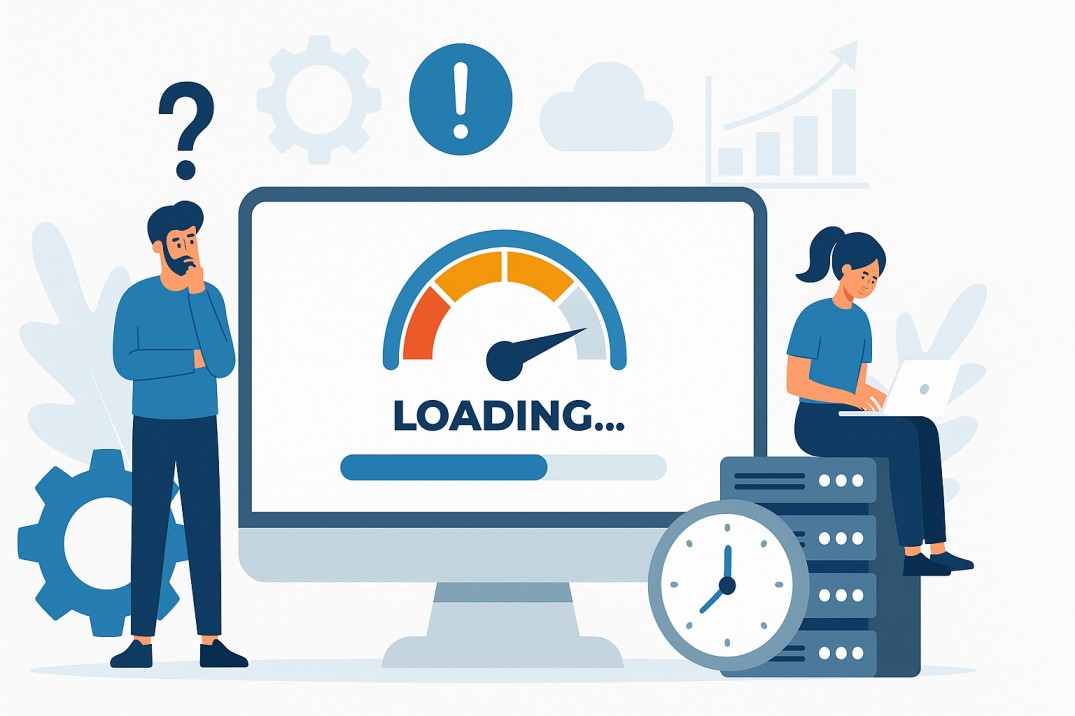
Large Images and Unoptimized Media
High-resolution photos look stunning. But they also force visitors to download massive files before seeing anything. Videos, PDFs, and other media make things worse. Each unoptimized asset adds precious seconds to load time.
Outdated Plugins and Themes
That convenient plugin installed two years ago? It might now be bloated code, slowing everything down. Outdated themes carry the same problem. Database queries pile up. HTTP requests multiply. Processing overhead compounds with each activation. Three plugins doing similar tasks? That’s triple the slowdown for the same function.
Poor Hosting and Server Issues
Cheap hosting places many websites on the same server. However, when one site receives heavy traffic, your site slows down as well. As a result, your site’s performance depends on others sharing that server.
In other words, your site’s speed depends on what happens with others on that shared server.
The problem gets worse with inadequate resources:
- Limited RAM creates bottlenecks
- Insufficient CPU allocation slows processing
- Poor disk speed delays data retrieval
- Geographic distance adds latency
A customer in New York trying to access a Singapore server faces built-in delays.
Excessive Scripts and CSS
WordPress sites accumulate digital baggage over time. Analytics tools. Chat widgets. Social media integrations. Email popups. Each one adds another HTTP request.
The real killer? Render-blocking resources. JavaScript and CSS files that prevent pages from displaying until they fully load. Visitors stare at blank screens, waiting and wondering if the site is broken.
WordPress performance optimization starts with diagnosis. Which issues affect a specific site? That answer determines the fix.
How Slow WordPress Sites Impact Sales and Conversions
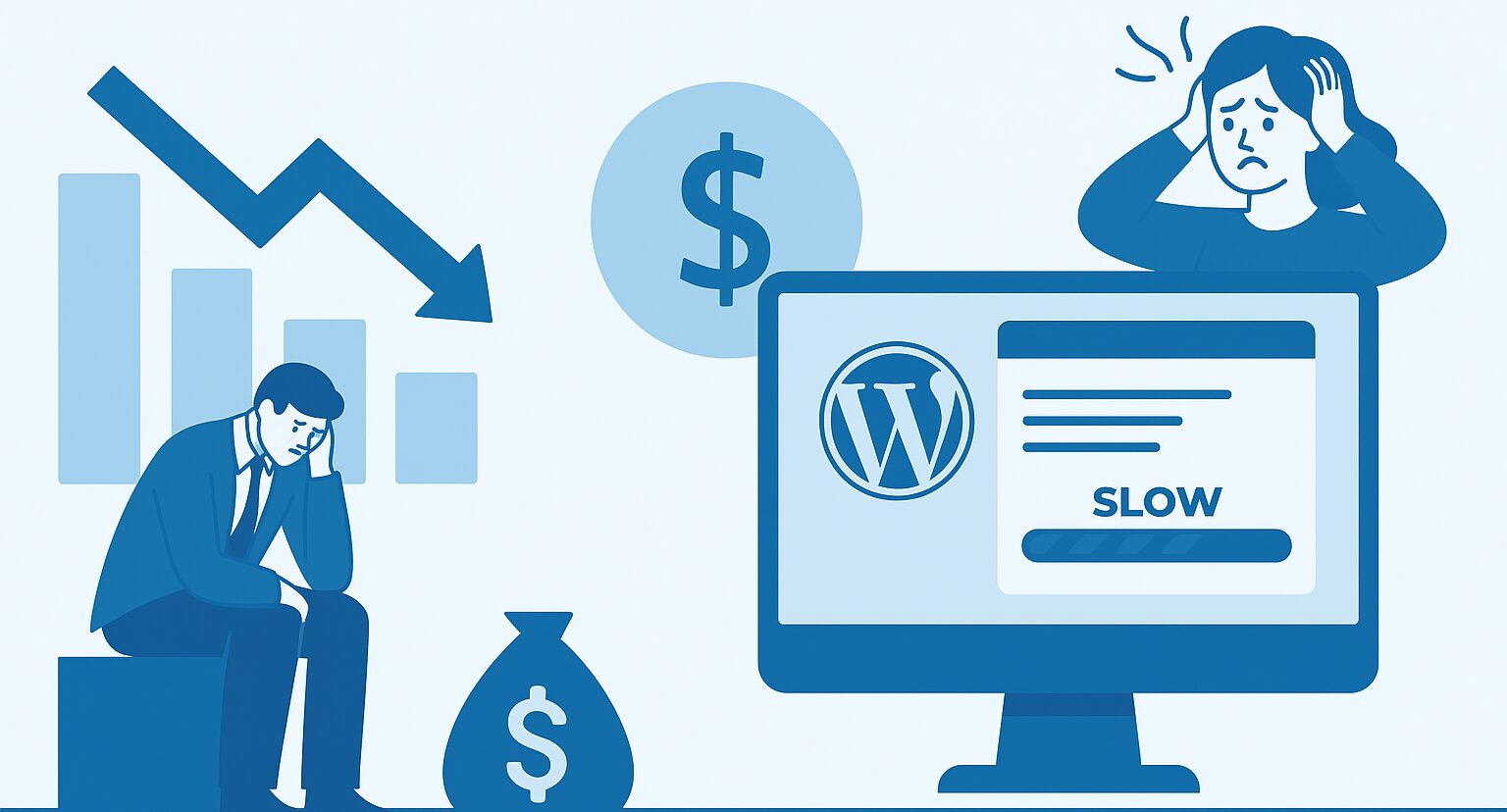
Increased Bounce Rates
Sites that load in under two seconds keep people engaged. However, once you cross the three-second mark, bounce rates increase sharply.
Therefore, fast sites keep users around longer and reduce drop-offs.
For eCommerce, this is catastrophic. Without slow WordPress website fixes, potential customers click away before seeing products. All that money spent on ads and SEO? Wasted on a slow site that drives traffic away.
Poor User Experience and Customer Frustration
Speed shapes perception. Slow sites feel unprofessional. Outdated. Unreliable. Competitors with faster sites win by default.
Slow-loading images or checkout pages frustrate users. As a result, they leave your site sooner.
In the long run, this creates a poor experience and damages your brand image.
SEO Rankings Take a Hit
Google made page speed an official ranking factor. Both desktop and mobile searches consider it. Core Web Vitals changed the game:
- Largest Contentful Paint (LCP) measures loading performance
- First Input Delay (FID) tracks interactivity
- Cumulative Layout Shift (CLS) quantifies visual stability
Poor WordPress performance for eCommerce means lower search visibility. The site becomes invisible where it matters most—search results.
Direct Conversion Rate Decline
Amazon calculated that every 100ms of latency costs them 1% in sales. Scale that to smaller businesses. A store earning $50,000 monthly with a 10% conversion drop from speed issues? That’s $5,000 lost per month. $60,000 annually. Gone because pages load too slowly.
The combined effect creates disaster: higher bounce rates, poor UX, plus reduced traffic equals devastated sales. Speed to boost WordPress website conversions isn’t optional anymore. It’s survival.
WordPress Website Speed Tips – Quick Fixes

Image Optimization
Tools like ShortPixel, Imagify, and Smush handle this automatically. File sizes drop 50-80% without visible quality loss.
Convert images to WebP format. It compresses better than JPEG or PNG. Implement responsive images using srcset attributes. Mobile users shouldn’t download desktop-sized files.
The workflow matters: optimize before upload, not after.
Implement Caching Solutions
Caching stores pre-generated page versions. This eliminates the need to process PHP and query databases for every single visitor. Install a caching plugin:
- WP Rocket
- W3 Total Cache
- WP Super Cache
These create static HTML versions of dynamic pages. Server load drops 80-90%. Configure page caching, browser caching, and object caching together for maximum impact.For anyone wondering how to speed up WordPress website quickly, caching delivers the biggest immediate win.
Minification and File Combination
Minification strips unnecessary characters from code. Spaces, line breaks, comments—all gone. File sizes shrink.
Combine multiple CSS files into one. Do the same with JavaScript. Fewer files mean fewer HTTP requests. Most caching plugins include minification features. Warning: test thoroughly after implementation.
Content Delivery Network (CDN) Setup
CDNs distribute static files across global server networks. Images, CSS, JavaScript—all delivered from the nearest location.
| CDN Provider | Best For | Starting Price |
| Cloudflare | Small to medium sites | Free tier available |
| StackPath | High-traffic sites | $10/month |
| BunnyCDN | Cost-conscious businesses | $1/month |
This WordPress website speed tip matters especially for international audiences.
Lazy Loading Implementation
Lazy loading delays loading below-the-fold images until users scroll to them. Browsers only download visible content initially. Initial load times improve significantly.
WordPress 5.5+ includes native lazy loading for images. Plugins like Lazy Load by WP Rocket provide more control and extend functionality to iframes and videos.
Reduce HTTP Requests
Every file requires an HTTP request. Images, scripts, stylesheets, fonts—they all add up.
Audit the site to identify unnecessary requests:
- Combine files where possible
- Use CSS sprites for small images
- Limit external scripts
- Choose themes with minimal dependencies
Tools like GTmetrix or Pingdom show exactly how many requests each page makes. The goal? Reduce that number ruthlessly.
Database Optimization
WordPress databases accumulate junk over time. Spam comments. Post revisions. Transient options. Orphaned data sitting unused but still consuming resources.
WP-Optimize cleans databases automatically. Schedule weekly cleanups. Limit post revisions in wp-config.php to prevent bloat. These small maintenance tasks prevent big slowdowns.
How to Speed Up WordPress Website: Advanced WordPress Performance Optimization
Quick WordPress speed tips work well, but advanced strategies work even better.
Here’s how you can achieve deeper WordPress performance optimization for lasting results.
Code Cleanup and Streamlining
Professional developers audit themes and custom code for inefficiencies. The typical findings?
- 80-90% of loaded CSS goes unused
- Redundant functions waste processing power
- Database queries run inefficiently
- Heavy plugins need lightweight replacements
A WordPress website development company performs comprehensive code audits. They find performance bottlenecks that standard testing tools miss completely.
Plugin Audit and Elimination
Sites accumulate plugins that serve overlapping functions. Deactivate and delete unnecessary ones. Research alternatives for remaining plugins. Sometimes one well-coded plugin replaces three mediocre ones.
Remember: each active plugin adds processing overhead. Minimalism equals speed.
Server-Side Optimization
Shared hosting has limits. Moving to VPS or managed WordPress hosting changes everything.
Performance Comparison: Hosting Types
| Feature | Shared Hosting | VPS Hosting | Managed WordPress |
| Resource allocation | Shared | Dedicated | Optimized |
| Server caching | Limited | Manual setup | Built-in |
| PHP version | Often outdated | Configurable | Latest (8+) |
| Automatic scaling | No | No | Yes |
| Average load time | 3-5s | 2-3s | 1-2s |
Platforms like WP Engine, Kinsta, or Cloudways provide optimized configurations specifically for WordPress. PHP 8+, server-level caching, automatic scaling—all included.
Implement Redis or Memcached for database query results. Configure PHP settings appropriately. These WordPress performance for eCommerce require technical expertise but deliver substantial improvements.
Performance Monitoring and Continuous Improvement
Implement real user monitoring (RUM) tools to track actual visitor experiences:
- Google PageSpeed Insights
- GTmetrix
- New Relic
Regular monitoring identifies when new plugins, theme updates, or content additions impact speed. Partnering with WordPress support services ensures ongoing monitoring and quick responses to performance degradation. Problems get caught early, before affecting sales.
Critical CSS and Asynchronous Loading
Inline critical CSS directly in HTML. This is the minimal styling needed for above-the-fold content. Load the rest asynchronously to prevent render-blocking.
Similarly, defer or async load JavaScript that isn’t immediately necessary. These techniques ensure pages become visually complete and interactive quickly. Remaining assets continue loading in the background without delaying the experience.
This comprehensive slow WordPress website fix strategy addresses both symptoms and root causes. Not just Band-Aids—actual solutions.
When to Hire WordPress Experts to Fix Speed Issues?
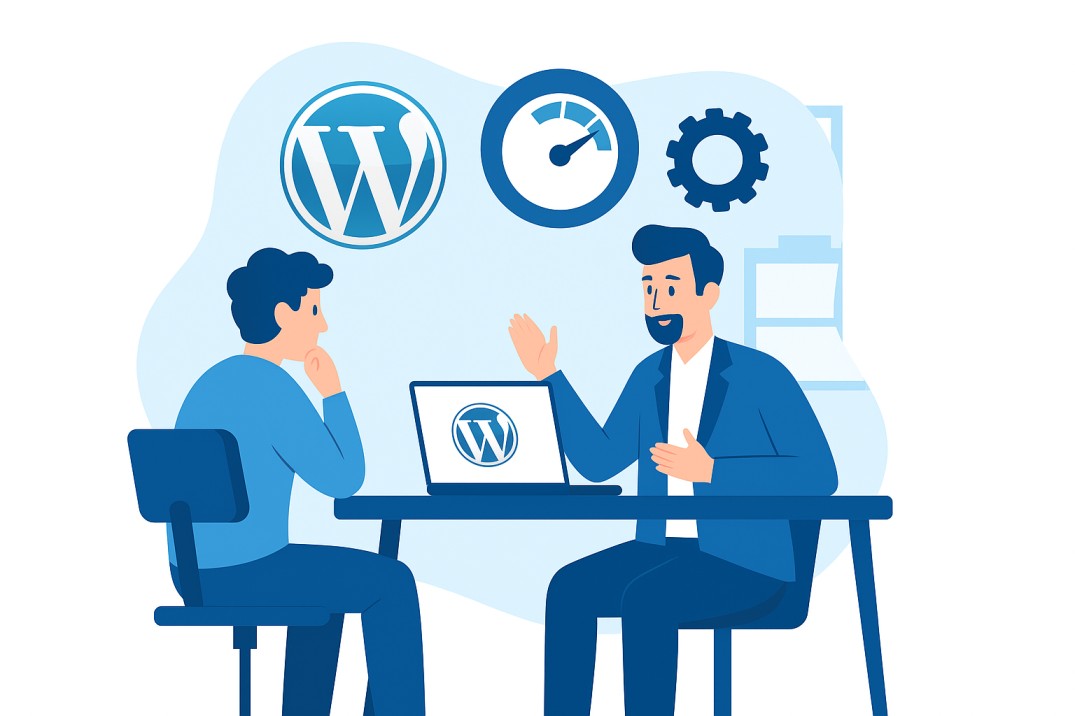
Signs Professional Help is Needed For WordPress Speed Optimization Techniques
Dashboard Performance Issues
The WordPress admin panel takes 10+ seconds to load pages. Update the timeout. This indicates database or server issues beyond basic optimization. Structural problems need expert diagnosis.
DIY Fixes Haven’t Worked
Caching is implemented. Images are optimized. The database is cleaned. Speed tests still show poor performance. Some bottlenecks require specialized knowledge to identify and resolve.
Professional developers use advanced profiling tools invisible to standard testing.
Sales Are Declining
Analytics show increasing bounce rates. Conversion rates are dropping. Both correlate with performance degradation. The cost of inaction exceeds the investment in professional help. A month of lost sales typically far outweighs optimization costs.
Complex Custom Functionality
Sites with custom plugins, intricate integrations, or specialized functionality need experts. Developers who understand both performance optimization and specific business logic. Breaking functionality while optimizing speed creates bigger problems than slow loading times.
Time and Expertise Constraints
Spending dozens of hours learning advanced WordPress optimization might not make financial sense. Focus on core business while experts handle technical optimization. The ROI calculation often favors outsourcing.
What Professional Services Provide?
Hire dedicated WordPress developers
who specialize in performance optimization. They bring:
- Specialized diagnostic tools
- Experience across hundreds of sites
- Knowledge of cutting-edge techniques
- Server configuration expertise
- Code optimization skills
- Security hardening
- Ongoing maintenance plans
Professional optimization investments pay for themselves quickly. Complete optimization packages cover everything needed for sustained performance.
Conclusion
WordPress website performance directly impacts the bottom line. These problems have solutions, though. To improve WordPress site speed, start with a diagnosis. Which issues affect the specific site? Identify the culprits first.
Apply quick fixes next. Image compression, caching, minification, CDN implementation—these WordPress website speed tips can reduce load times by 50-70%. Minimal technical expertise required. Deeper optimization comes through advanced techniques.
Sustainable WordPress performance optimization that lasts. When do DIY efforts reach their limits? Get professional help. Speed issues threatening revenue justify expert intervention. Specialists can improve WordPress site speed beyond what standard techniques achieve.
The website’s performance isn’t just a technical metric. It’s a business metric. Treat it accordingly.
FAQs
What is considered a good loading speed for a WordPress eCommerce site?
Target under 2 seconds for initial page load. Under 3 seconds for full page interactivity. Google recommends Largest Contentful Paint (LCP) under 2.5 seconds for good Core Web Vitals scores.
For eCommerce specifically, faster is always better.
How often should WordPress site performance be optimized?
Conduct basic performance checks monthly to boost WordPress website conversions. Comprehensive audits quarterly. After any major updates—theme changes, plugin additions, content migrations—test speed immediately. Implement continuous monitoring for real-time alerts. Proactive beats reactive every time.
Can WordPress speed be optimized without changing hosting providers?
Yes. Many optimizations work regardless of hosting. Caching, image optimization, plugin audits, and code cleanup deliver improvements on any platform.
However, severely limited shared hosting eventually becomes a bottleneck. Optimize everything else first. Still have speed issues? Hosting upgrades become necessary.
Will speed optimization affect site functionality or design?
When done correctly, optimization should be invisible to users. Aggressive minification, lazy loading, or script deferral can occasionally break functionality, though. Always test thoroughly in a staging environment first. Maintain backups. Never make changes directly on live sites without testing.
How much does professional WordPress speed optimization typically cost?
One-time optimization services range from $500 to $5,000+, depending on site complexity and existing issues. Ongoing maintenance plans with performance monitoring typically cost $100-$500 monthly.
Consider this against lost revenue. Slow speed costs $5,000 monthly in conversions? Even premium optimization is immediately profitable.
What’s the difference between page caching and object caching?
Page caching stores complete HTML versions of pages. This eliminates PHP processing for most visitors. Biggest speed boost available. Object caching stores database query results. Even uncached pages load faster by reusing common data. Particularly helps dynamic content and logged-in users. Use page caching for maximum impact. Add object caching for dynamic content optimization.
Should multiple caching plugins be used for better performance?
No. Multiple caching plugins typically conflict. Choose one comprehensive solution. WP Rocket or W3 Total Cache handle page caching, browser caching, and optimization features. Combine with server-level caching (Redis/Memcached) for optimal results.

About Author
Pankaj Sakariya - Delivery Manager
Pankaj is a results-driven professional with a track record of successfully managing high-impact projects. His ability to balance client expectations with operational excellence makes him an invaluable asset. Pankaj is committed to ensuring smooth delivery and exceeding client expectations, with a strong focus on quality and team collaboration.



